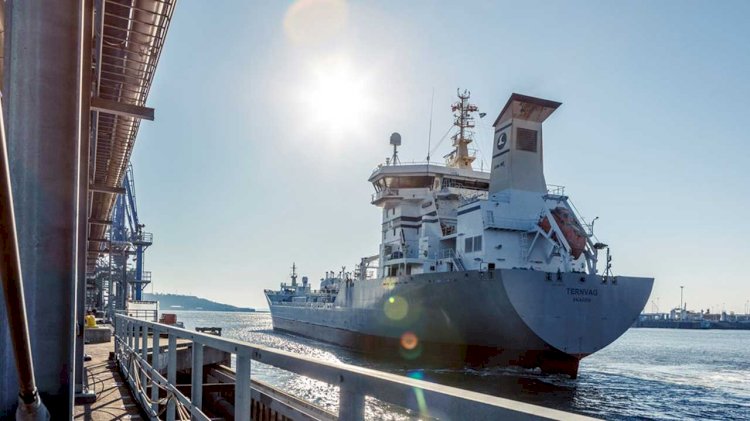When physical contact between members of the crew on board ship and workers at the quayside needs to be kept to a minimum, new routines are required – and quickly. At the Port of Gothenburg there are clear indications of how the Corona pandemic could accelerate digitalisation in what is an otherwise conservative shipping industry.
As a result of the Corona outbreak, the majority of ports throughout the world have been forced to re-examine their routines. Greater use of digital tools has been part of the solution in an effort to maintain an efficient workflow. At the same time, it takes slightly longer at the quayside when the new routines are being introduced. Even though a great deal of the work takes place remotely during the approach, once the vessel is at the quayside a whole range of physical interactions are normally required between the crew and the dockworkers. This could involve everything from inspecting the quality of the cargo to going through permits, safety checklists, and notices of readiness before loading or discharging.
Dan-Erik Andersson, Chief Operating Officer at the Energy Port in Gothenburg, says:
“Loading and discharge are traditionally based on human contact. It’s quick and the entire system has been refined over the years. Changing the whole structure so quickly may result in a loss of time and momentum. However, by introducing new routines and new systems, and ensuring more tasks are carried out simultaneously rather than consecutively, we can probably become more efficient in the long run.”
Increased automation and digitalisation is a top priority at the Port of Gothenburg. The majority of the initiatives that have already been introduced have proved to be particularly constructive during the Corona pandemic. The digital system Permesso, which was introduced in 2019, has resulted in a significant reduction in administration and face-to-face contact when issuing work permits to contractors. The automatic gates for trucks introduced by APM Terminals at the Container Terminal are another example of a more efficient operating procedure, reducing the need for physical interaction.
Malin Collin, Deputy CEO at the Gothenburg Port Authority, is responsible for the digitalisation process. She states that extensive digital changes at the port will be introduced within the near future and could make a substantial difference.

According to Malin Collin, it is largely a question of improving efficiency and visualising freight flows and traffic movements to and from the port. She says:
“This is one of the most critical issues and we have dedicated resources to finding a solution. We are currently examining how artificial intelligence can make use of historical data to predict events and speed up the decision-making process. We can improve planning through data-driven decisions, identifying trends, and predicting events. By doing so we can create a platform for more efficient freight flows and transport movements on land and at sea.”
She states that enhanced digitalisation will benefit everyone. Nevertheless, if it is to produce the desired outcome, more people in the transport chain need to link into common systems and share information with each other.
She says:
“My impression is that the level of acceptance is rising, particularly now we are faced with the Corona crisis. But someone needs to take the initiative, act as a driving force, and offer effective alternatives that more people want to adopt. At the Gothenburg Port Authority, we are only too willing to lead the way and that’s why we are devoting so much time and resources to digital development.”



